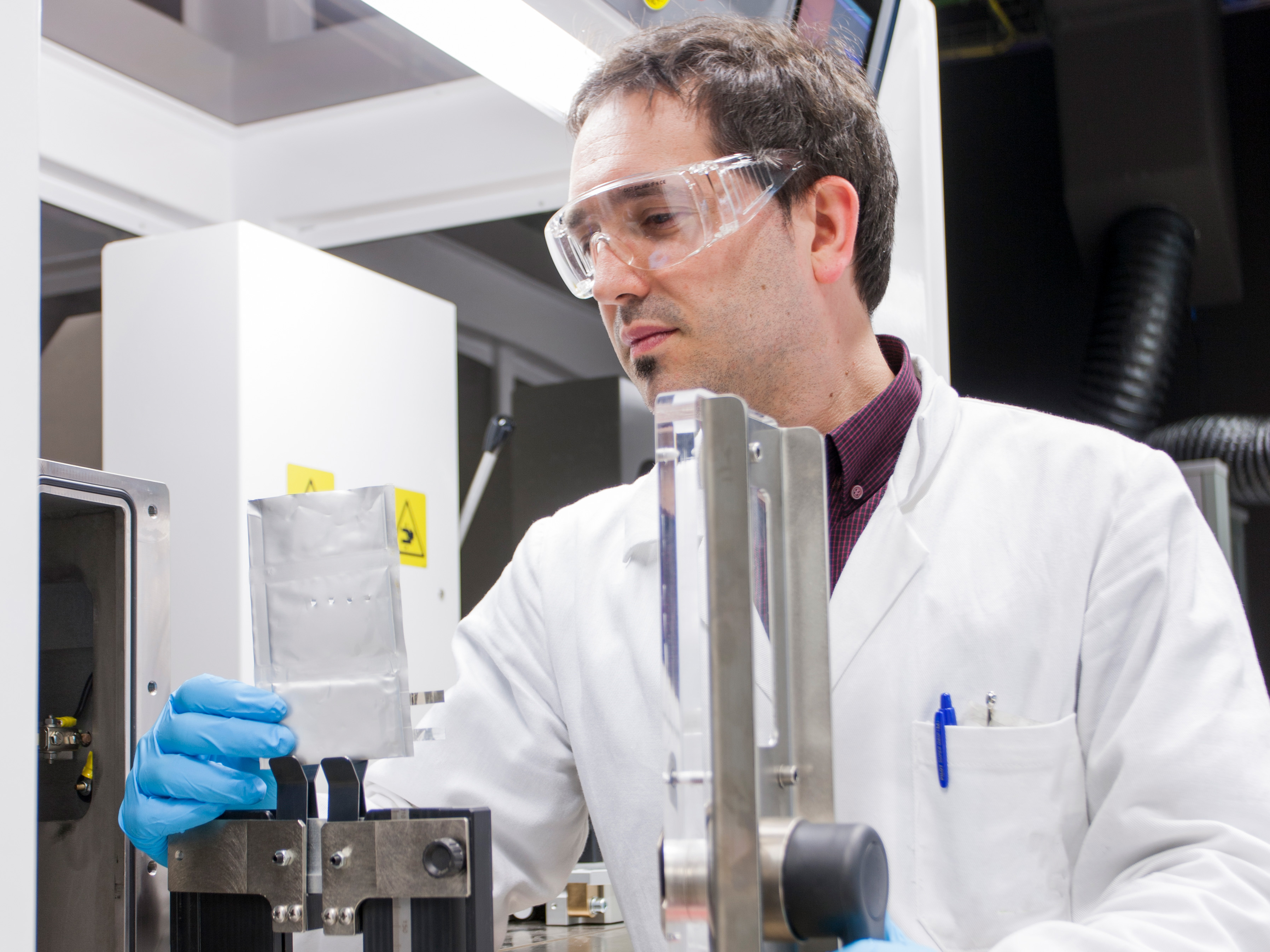CIC energiGUNE, the Basque research center of reference in battery storage, thermal energy solutions and hydrogen technologies, and member of the Basque Research & Technology Alliance-BRTA, is working on the design of a new battery cell, based on the application of an innovative electrolyte “gelling” system, which will allow the manufacture of more economical and safer lithium-ion batteries. This development is part of the European NEXTCELL project, financed by he EU through the Horizon Europe Program, in which the Basque center participates together with other 16 companies and entities of the continent.
According to those responsible for the project at CIC energiGUNE, tis research will make it possible to implement a highly innovative technology with a cobalt-free cathode and polymer gels as electrolyte in lithium-ion batteries, which is the leading technology on the market for many applications. Its development will lead to a new generation of high-capacity lithium-ion batteries that can also reach higher voltages than current technologies, guaranteeing excellent performance thanks to their high energy density.
The innovative concept of gelled cells proposed by NEXTCELL is based on overcoming the current cell model, composed of solid porous electrodes and filled with liquid electrolyte. To this end, work will be done on the gelation of the main components of the cell through the design and integration of several innovations in its materials. On the one hand, progress will be made in the gelation of the electrodes and, on the other hand, work will be done on the separator, so that by combining it with a stable gel electrolyte at high voltage, a complete concept of gelled cell can be obtained.





